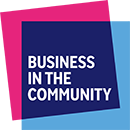The Mid-Life MOT: getting started
This guide for small- and medium-sized businesses sets out how a mid-life MOT can help both employees and employers. The mid-life MOT is a review that enables employees in their 50s and 60s to assess their health, skills and finances, so they can better prepare and plan for the future they want. For employers, mid-life MOTs help retain older employees, keeping crucial knowledge and skills within the organisation.
If you are an HR or other senior manager in a larger organisation you might be interested in our toolkit The Mid-Life MOT: helping employees navigate mid-life.
Older workers face significant challenges in balancing work and daily life, and many who left work during the COVID-19 pandemic are choosing not to return. This toolkit explains how employers can use a mid-life MOT to address this challenge by helping employees assess their current personal, employment and wellbeing needs and help them plan their financial futures.
These conversations are important. Polling by the Centre for Ageing Better of employees aged over 50 found that
- only 21% felt they could talk openly about adjusting their current role to suit their needs, for example, flexible working.
- one fifth (20%) felt they could talk openly about their retirement plans.
- only 24% felt they could talk openly with their manager about future career plans1.
How mid-life MOTs help businesses and individuals
Mid-life MOT conversations provide important support for employees, helping them reflect on how they want their job to develop and adapt to future change. However, employers benefit too.
- Older workers are often a company’s most skilled and experienced employees and retaining them is crucial. The mid-life MOT helps people plan for their future and stay in work for longer.
- Mid-life MOTs help to identify different ways in which employers can act to retain older workers. These might include flexible hours or working from home, support during life-changing events such as becoming a carer and helping managers to adopt a more age-inclusive approach.
- Health and skills are also key elements of staying in work. Offering support early on can increase wellbeing across the workforce.
This can result in
- higher staff retention and better employee engagement
- reduced staff absence rates and ill-health
- increased productivity
- increased take-up of learning and development.
How a mid-life MOT works
A mid-life MOT helps people think about three core themes:
- Job: training and skills – How do people see their job developing and changing? Do people need to change the way they work to help them stay in work for longer? Are there options to think about current skills and how people might best build additional skills, or perhaps retrain to support their own career ambitions and meet the needs of the business?
- Health: health and wellbeing – What can people do to remain fit and healthy as they get older? What support can employers offer to help people balance their health needs with work? What support is important to the many older workers who have caring responsibilities?
- Money: financial planning for retirement – How can people best be supported to think about life after work and make plans for their future? Are pensions and savings on track to give people the sort of future they want? What changes might happen before retirement which could impact current and future finances?
LEARN MORE
Business in the Community is developing a skilled and inclusive workforce
Featured content
References
- Centre for Ageing Better (2018) Age discrimination in the workplace
